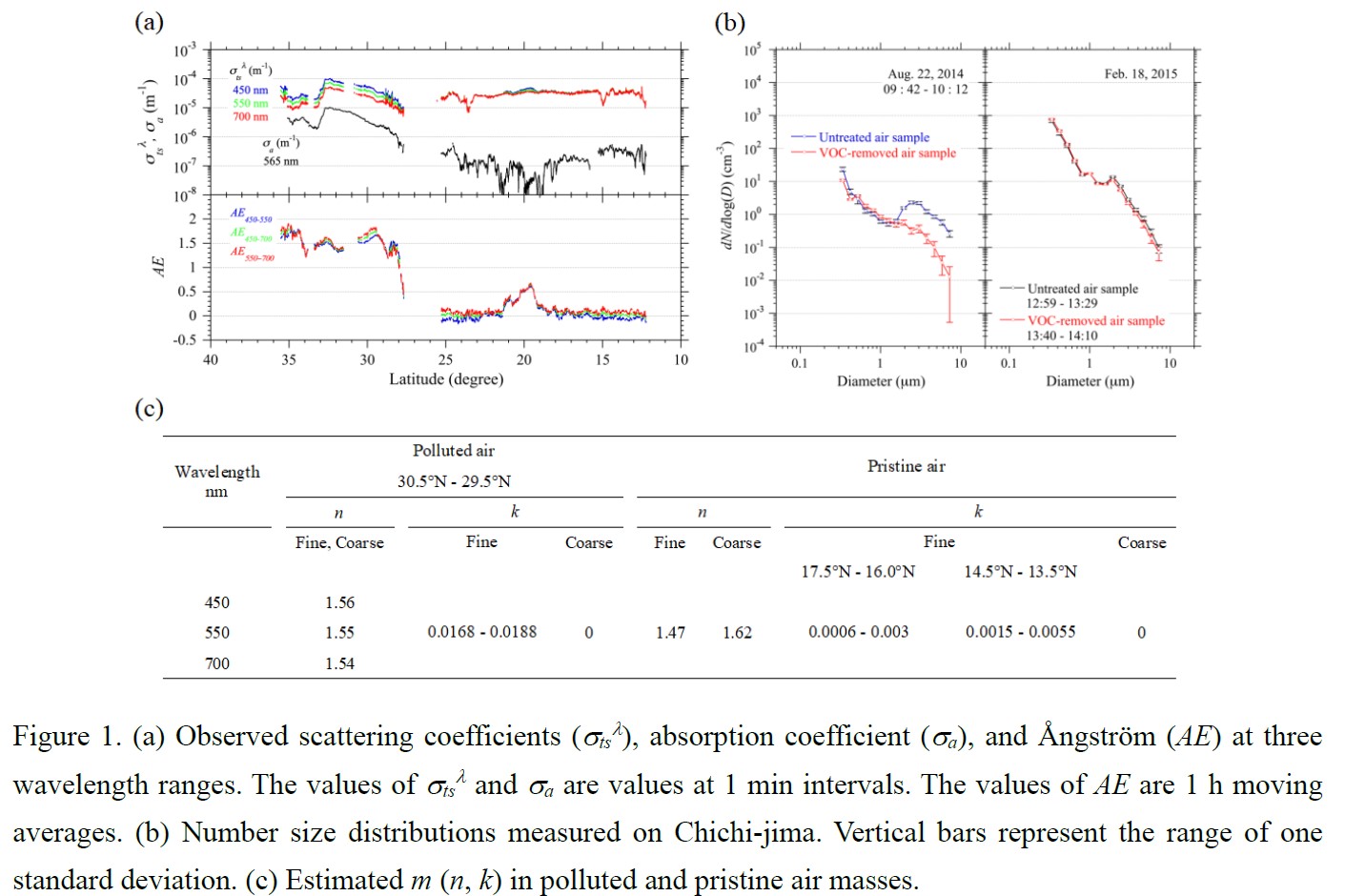Graphical Abstract
Koga, S., 2024: Optical Properties of Aerosol Particles in the Atmospheric Boundary Layer over the Northwestern Pacific: High Refractive Index for Coarse Particles in Pristine Air. J. Meteor. Soc. Japan, 102.
https://doi.org/10.2151/jmsj.2024-002
Early Online Release
Graphical Abstract
New GA
Plain Language Summary: The purpose of this study is to estimate complex refractive indices m (n, k) = n – ki of aerosol particles over the northwestern Pacific using observed aerosol scattering and absorption coefficients and number size distributions. This study reports that the estimated high n value of the coarse particles in pristine air masses is likely caused by the optical properties of secondary organic aerosols condensed on coarse particles.

Highlights:
- In polluted air masses, a refractive index of 1.55 for aerosol particles at a wavelength of 550 nm was estimated to be uniform regardless of the number size distribution. In addition, the refractive index exhibits normal dispersion.
- In the pristine air masses, the refractive indices were estimated to be 1.47 for fine particles and 1.62 for coarse particles. The refractive index of the coarse particles was even higher than the 1.544 of sea salt. The differences in number concentration between the VOC-removed and untreated air samples suggests that VOCs preferentially condense onto coarse particles.
- The results of the present study indicate that the m (n, k) of coarse particles in the pristine air masses was most likely affected by organic compounds originating from biological activity.






